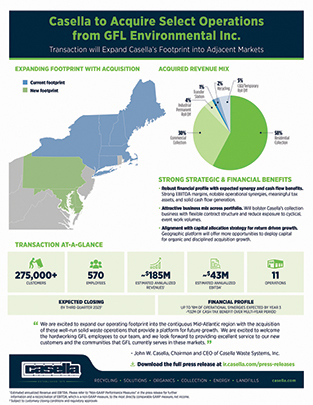are “forward-looking statements”. These forward-looking statements can generally be identified as such by the context of the statements, including words such as “believe,” “expect,” “anticipate,” “plan,” “may,” “would,” “intend,” “estimate,” “will,” “guidance” and other similar expressions, whether in the negative or affirmative. These forward-looking statements are based on current expectations, estimates, forecasts and projections about the industry and markets in which the Company operates and management’s beliefs and assumptions. The Company cannot guarantee that it actually will achieve the financial results, plans, intentions, expectations or guidance disclosed in the forward-looking statements made. Such forward-looking statements, and all phases of the Company’s operations, involve a number of risks and uncertainties, any one or more of which could cause actual results to differ materially from those described in its forward-looking statements.
Such risks and uncertainties include or relate to, among other things, the following: failure to satisfy all closing conditions, including receipt of regulatory approvals, that may prevent closing of the transaction; the Company may not fully recognize the expected financial benefits from the acquisition due to an inability to recognize operational cost savings, market factors, landfill internalization benefits, or due to competitive or economic factors outside its control which may impact revenue and costs, or for other reasons; and the Company may be unable to achieve its acquisition goals as part of the 2024 strategic plan due to competition for attractive targets or an inability to reach agreement with potential targets on pricing or other terms.
There are a number of other important risks and uncertainties that could cause the Company’s actual results to differ materially from those indicated by such forward-looking statements. These additional risks and uncertainties include, without limitation, those detailed in Item 1A. “Risk Factors” in the Company’s most recently filed Form 10-K for the fiscal year ended December 31, 2022, and in other filings that the Company may make with the Securities and Exchange Commission in the future.
The Company undertakes no obligation to update publicly any forward-looking statements whether as a result of new information, future events or otherwise, except as required by law.
Non-GAAP Performance Measures
In addition to disclosing financial results prepared in accordance with generally accepted accounting principles in the United States (“GAAP”), the Company also presents non-GAAP performance measures such as EBITDA and EBITDA as a percentage of revenues that provide an understanding of operational performance because it considers them important supplemental measures of the Company’s performance that are frequently used by securities analysts, investors and other interested parties in the evaluation of the Company’s results. The Company also believes that identifying the impact of
